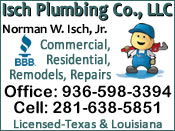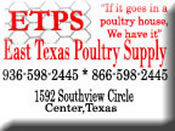
Vegetables can be successfully produced in large containers.
April 8, 2024 - Container gardening sounds very appealing, and it is for those who have no ground in which to garden. Just be warned that gardening in containers in Texas is harder than gardening in the ground.
The number one limiting factor with container gardening in here is water. Due to gravity and the limited amount of soil contained in pots, containers in Texas often must be watered as much as twice a day to survive and produce. If a single watering is missed on a hot day, the vegetable plants will possibly die or, at the least, their production will be aborted.
There are two main ways to avoid frequent drought stress when container gardening. The first is using the largest pot size you can find. The larger the container the more soil mix it will hold and the slower it will dry out. Larger containers allow plants to have larger root systems, which are better at avoiding drought stress. I consider whiskey barrel–sized (30 gallon) containers the minimum size for vegetables. Any large container will work if there are drainage holes in the bottom. I suggest avoiding 5-gallon plastic buckets as they are just too small.
When watering, it is important to soak the entire soil area from top to bottom. Oftentimes, especially when the soil is dry, water will run off the top and down the inside of the container without soaking the roots. Use low-pressure drip irrigation to soak the entire root zone as it slowly waters the plants with little runoff.
The potting soil you use in containers will spell the difference between success and failure. There are two choices that you want to avoid. Topsoil dug from the ground is heavy and though it may drain well in the ground, it will not drain well in a container. Composted black pine bark, which the nursery industry uses to grow woody plants, is not a desirable choice either, as it drains too well and does not retain nutrients.
Though you can experiment with mixtures of compost, washed sand, and topsoil, for most beginners the best option is a professional, peat-based potting soil. Just remember that there are three grades of potting soil. Inexpensive potting soils are made from composted pine bark and are tricky. Medium-priced potting soils are made from muck peat and do a fair job. Professional potting soils are made from sphagnum peat moss (often with perlite, vermiculite, wetting agent, and nutrient charge added) and do the best job of producing vegetables in containers. They cost more but are worth it. These mixtures, which are used by most greenhouse growers, have good water- and nutrient-holding capacities, which makes a dramatic difference in container gardening. If you cannot find a professional peat-based potting mix, you can add about 50% sphagnum peat moss to the cheap, bark-based potting soil along with a slow-release fertilizer, such as Osmocote. Using a slow-release fertilizer in a container will help provide constant nutrition without leaching. Slow-release fertilizers may not provide all the nutrition your container plants need and may have to be supplemented with water-soluble fertilizers (such as Miracle-Gro or others) as needed.
Greg Grant is the Smith County horticulturist and Master Gardener coordinator for the Texas A&M AgriLife Extension Service. He is the author of Texas Fruit and Vegetable Gardening, Texas Home Landscaping, Heirloom Gardening in the South, and The Rose Rustlers. You can read his “Greg’s Ramblings” blog at arborgate.com, read his “In Greg’s Garden” in each issue of Texas Gardener magazine (texasgardener.com), or follow him on Facebook (“Greg Grant Gardens”) and Instagram (“ggrantgardens”). More science-based lawn and gardening information from the Texas A&M AgriLife Extension Service can be found at aggieturf.tamu.edu and aggie-horticulture.tamu.edu.









